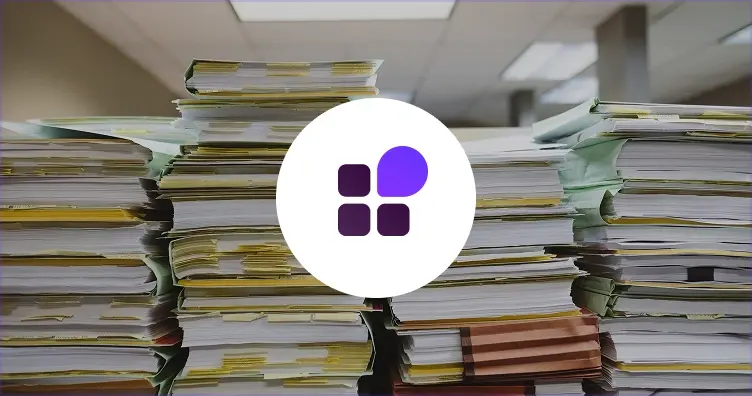As established and emerging organisations look to adopt the intelligence of AI and the agility of hybrid cloud to transform, automate and secure their business, this can also lead to increased costs, risk exposure, and complex data management and governance issues if not managed correctly.
Despite the numerous benefits of hybrid and multicloud models, there are several challenges for such cloud environments. The most obvious being, how do you manage large amounts of data, their sources, and storage locations, in a continually expanding and changing business?
Thankfully, there are several solutions to help manage and make your trusted data available to the right users, at the right time, regardless of its location. One being, the adoption of a data fabric architecture.
A data fabric enables management, access, security, and governance across distributed data environments.
We’ll look at some challenges faced by hybrid and multicloud cloud landscapes and how data fabric can help mitigate these business issues.
What does it mean to manage your data in a hybrid cloud environment?
Large multi-geographical companies will struggle to find a single public cloud service to support their needs. They also run the risk of vendor lock-in, while internal data stores can be incredibly expensive and complex. Hybrid cloud environments are therefore an obvious choice for expanding organisations and those with multiple departments running several projects. The overarching challenges faced by companies taking a hybrid approach involve the overall management and access to the large amounts of data they hold.
So how do you locate, access, and produce business-ready results in such a complex environment?
Data systems of this kind require intuitive AI and the implementation of a unified platform such as IBM Cloud Pak® for Data that delivers a data fabric to connect and access siloed data on-premises or across multiple clouds without having to move it.
A data fabric architecture delivers successful management of your data in hybrid and multicloud environments, implementing a culture of sharing and collaboration between departments and the maintenance of policy and governance procedures across your entire data network. This is done to ensure companies reap the full benefits of the data at their disposal in the most efficient manner.
Here we’ll look at some of the challenges faced and how effective data management can overcome them.
Challenges faced by adopting hybrid cloud:
1. Migration
Migrating data from on-premises frameworks and differing public cloud networks can be costly and time-consuming. This is because different cloud and legacy systems may not operate well together meaning more difficulty in accessing, storing, and deploying usable data.
A data fabric nullifies this by cataloging and issuing data from wherever it is stored. This removes the need to move data from its current location. Essential information can be gathered from numerous sources and issued to users in an efficient usable manner. Whether in-house or in a cloud, data is collected at its source.
2. Governance
As the methods of collecting and storing data increase, so too does the amount of data that companies collect. To this end, governance and policy adherence becomes a major priority, especially for companies working internationally. This is because of different privacy, access, and data usage regulations impacting company operations in each location.
Companies that are based in multiple locations and collect data from many sources must ensure they comply with regulations in their area, irrespective of where the data has come from. Hybrid environments with multiple locations will have varying degrees of policy and governance regulations to comply with.
AI and machine learning are two of the best methods of applying appropriate policy controls to such data. Data fabric does this through a method of policy application based on location and company policy and ensures that data collected and stored in one location is accessed and used appropriately in another, ensuring companies are compliant regardless of location.
3. Costs
Costs are a major reason for adopting a hybrid cloud model. The use of both on-premise and multiple public clouds reduces storage costs, eradicates the reliance on one vendor, and allows greater freedom in the use of applications and tools provided by cloud providers.
However, costs can ultimately develop when there is no cohesion between cloud systems, department usage, and the accessing of siloed and sensitive data.
Unfamiliarity with different clouds that don’t cooperate can slow down business response time, resulting in the wrong or outdated information being used and affecting the reputation of a company.
All of which can impact costs and profitability.
A data fabric architecture reduces these risks by allowing real-time access to the most vital information when it’s required, locating the information where it’s stored, and producing results in a digestible way ensuring it is up to date, accurate, and timely.
4. Hybrid Cloud and the Culture of Sharing
While adopting a hybrid cloud incorporating a mix of new and legacy systems, and the power of machine learning and AI to accurately catalogue, access, and produce data, it is also necessary for companies to initiate a culture of data sharing within their business.
In complex hybrid and multicloud data landscapes and when adopting a data fabric architecture, a change in company culture is needed. The end goal must be shown to be the improvement of the company and its methods while also highlighting the benefits of hybrid cloud and data fabric infrastructures. The successful adoption of such techniques is what will ultimately drive company success, but this must be an internal change.
Conclusion
The points and challenges mentioned above are not an exhaustive list. Rapidly expanding businesses, especially those which gather large amounts of data benefit from such data when it is used correctly.
Hybrid and multicoud environments as we have seen are necessary for businesses of all types. Successful management of your data within these environments comes down to adopting data management solutions that allow for rapid and accurate data retrieval across disparate data repositories, combined with the implementation of change within a company's culture.
A data fabric architecture can assist in many of the areas of governance, protection, and access, helping to improve your decision-making and drive digital transformation.

 Cyber Recovery
Cyber Recovery



